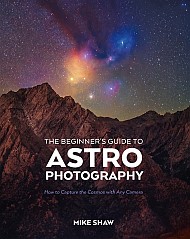Astronomy
Heart and Kidney Diseases, plus Type 2 Diabetes, May Be One Illness Treatable with Ozempic-like Drugs
These three disorders could really be “CKM syndrome,” which can be treated with drugs like Ozempic
Science Carries On. Here Are Our Top Topics for 2026
Whether space, health, technology or environment, here are the issues in science that the editors of Scientific American are focusing on for 2026
Meet Your Plastic Pal
A new generation of household robots could change the way you live
Interoception Is Our Sixth Sense, and It May Be Key to Mental Health
Disruptions in interoception may underlie anxiety, eating disorders, and other mental health ailments
Readers Respond to the September 2025 Issue
Letters to the editors for the September 2025 issue of Scientific American
The Hype behind Expensive Probiotic Supplements
Popular supplements with billions of “good” microbes really help only a few illnesses, research shows
Meet Your Future Robot Servants, Caregivers and Explorers
Robots are poised to play a much bigger role in daily life at home, at work and in the world
Science Crossword: Pointing South
Play this crossword inspired by the January 2026 issue of Scientific American
Poem: ‘Large Hadron Collider,’ ‘Maxwell’s Demon’ and ‘Music for the Heat Death of the Universe’
Science in meter and verse
What Your Sleep Profile Reveals about Your Health
Psychological data and brain scans show how sleep can improve our lives, our bodies and our relationships
January 2026: Science History from 50, 100 and 150 Years Ago
Killer bees; Mars volcanoes
Mysterious Bright Flashes in the Night Sky Baffle Astronomers
Celestial transients shine furiously and briefly. Astronomers are just beginning to understand them
Saturn's rings form a giant dusty doughnut encircling the planet
Saturn's rings form a giant dusty doughnut encircling the planet
Your period may make sport injuries more severe
Your period may make sport injuries more severe
China's Shenzhou-21's Crew Test New Spacesuits During Spacewalk
The Shenzhou-21 crew on board China's orbiting space station completed its first extravehicular activities on Tuesday, Dec. 9th, during which they validated the new EVA spacesuits.
Uranus and Neptune might be rock giants
A team of researchers from the University of Zurich and the NCCR PlanetS is challenging our understanding of the interior of the Solar System's planets. The composition of Uranus and Neptune, the two outermost planets, might be more rocky and less icy than previously thought.
RNA May Be Common throughout the Cosmos, New Study Suggests
New experiments show how RNA might form not just on Earth but on other rocky planets, too
It Didn't Take Long For Earth's Ancient Oceans To Become Oxygenated
For roughly two billion years of Earth’s early history, the atmosphere contained no oxygen, the essential ingredient required for complex life. Oxygen began building up in the atmosphere during the period known as the Great Oxidation Event (GOE), but it had to enter the oceans first. When and how it first entered the oceans has remained uncertain.


